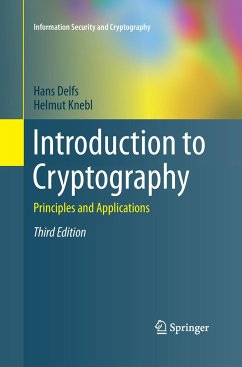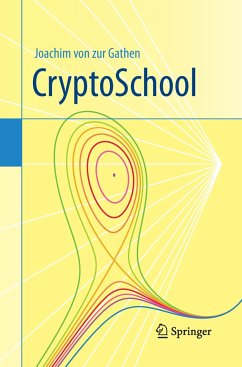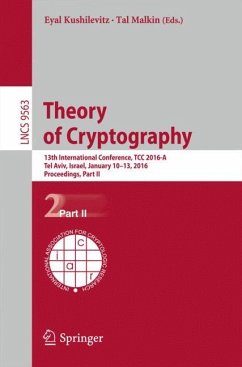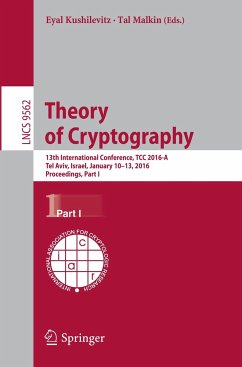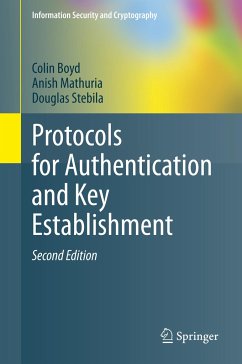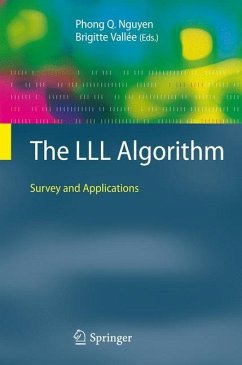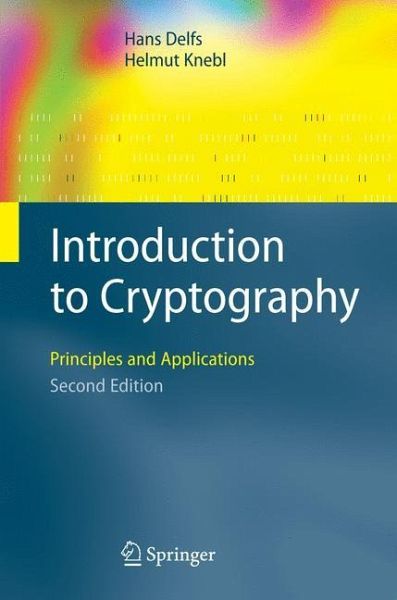
Introduction to Cryptography
Principles and Applications
Versandkostenfrei!
Versandfertig in 6-10 Tagen
46,99 €
inkl. MwSt.
Weitere Ausgaben:

PAYBACK Punkte
23 °P sammeln!
Due to the rapid growth of digital communication and electronic data exchange, information security has become a crucial issue in industry, business, and administration. Modern cryptography provides essential techniques for securing information and protecting data.In the first part, this book covers the key concepts of cryptography on an undergraduate level, from encryption and digital signatures to cryptographic protocols. Essential techniques are demonstrated in protocols for key exchange, user identification, electronic elections and digital cash. In the second part, more advanced topics ar...
Due to the rapid growth of digital communication and electronic data exchange, information security has become a crucial issue in industry, business, and administration. Modern cryptography provides essential techniques for securing information and protecting data.
In the first part, this book covers the key concepts of cryptography on an undergraduate level, from encryption and digital signatures to cryptographic protocols. Essential techniques are demonstrated in protocols for key exchange, user identification, electronic elections and digital cash. In the second part, more advanced topics are addressed, such as the bit security of one-way functions and computationally perfect pseudorandom bit generators. The security of cryptographic schemes is a central topic. Typical examples of provably secure encryption and signature schemes and their security proofs are given. Though particular attention is given to the mathematical foundations, no special background in mathematics is presumed. The necessary algebra, number theory and probability theory are included in the appendix. Each chapter closes with a collection of exercises.
The second edition contains corrections, revisions and new material, including a complete description of the AES, an extended section on cryptographic hash functions, a new section on random oracle proofs, and a new section on public-key encryption schemes that are provably secure against adaptively-chosen-ciphertext attacks.
In the first part, this book covers the key concepts of cryptography on an undergraduate level, from encryption and digital signatures to cryptographic protocols. Essential techniques are demonstrated in protocols for key exchange, user identification, electronic elections and digital cash. In the second part, more advanced topics are addressed, such as the bit security of one-way functions and computationally perfect pseudorandom bit generators. The security of cryptographic schemes is a central topic. Typical examples of provably secure encryption and signature schemes and their security proofs are given. Though particular attention is given to the mathematical foundations, no special background in mathematics is presumed. The necessary algebra, number theory and probability theory are included in the appendix. Each chapter closes with a collection of exercises.
The second edition contains corrections, revisions and new material, including a complete description of the AES, an extended section on cryptographic hash functions, a new section on random oracle proofs, and a new section on public-key encryption schemes that are provably secure against adaptively-chosen-ciphertext attacks.





